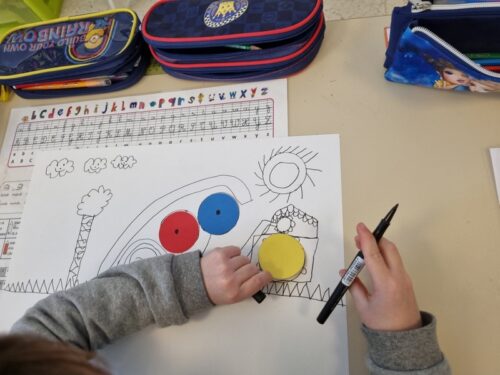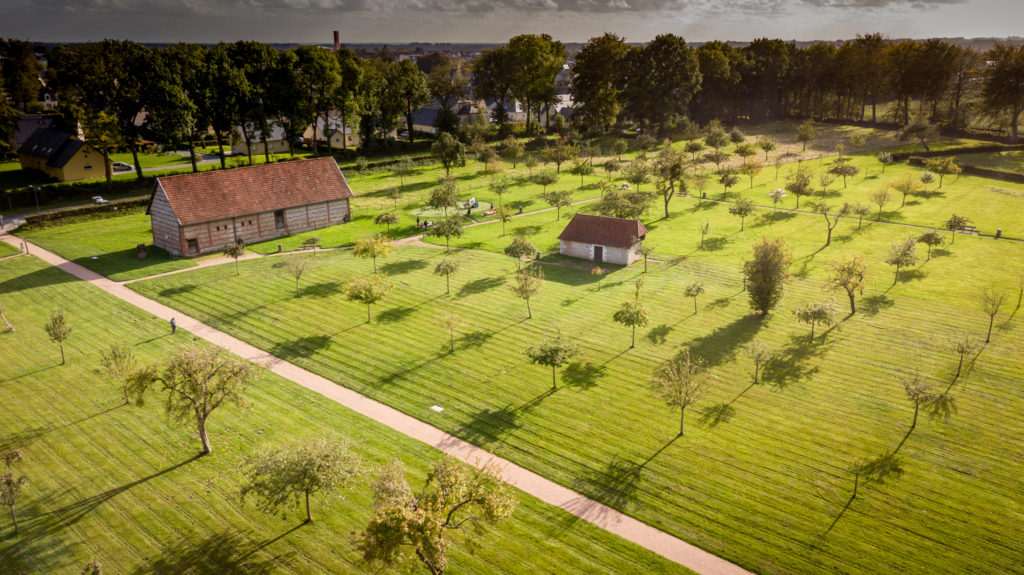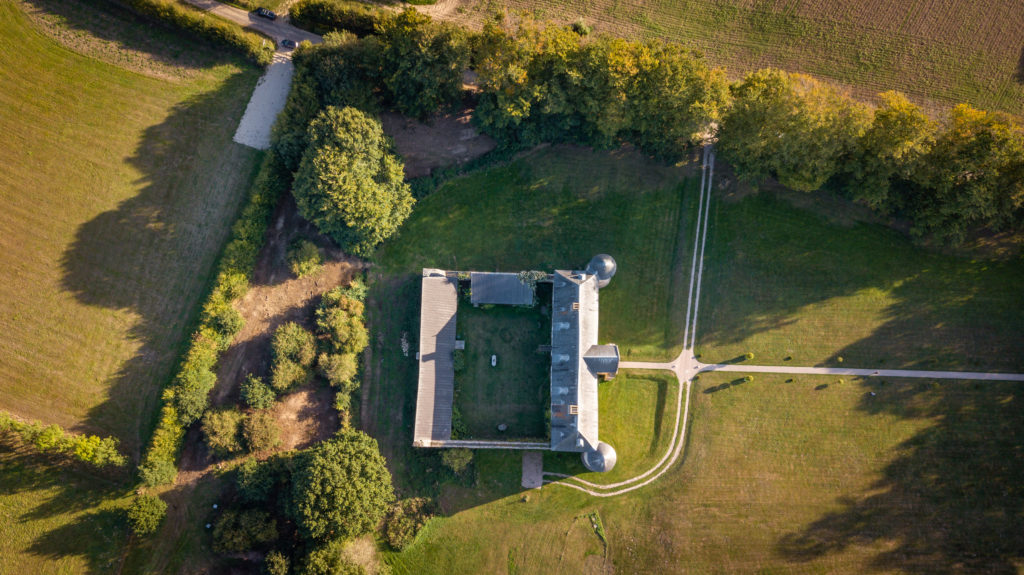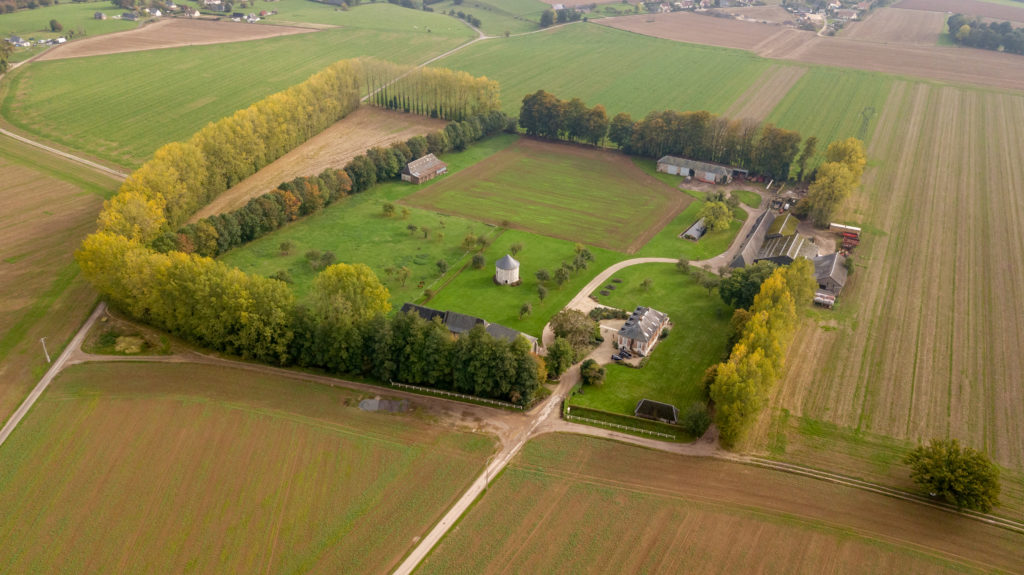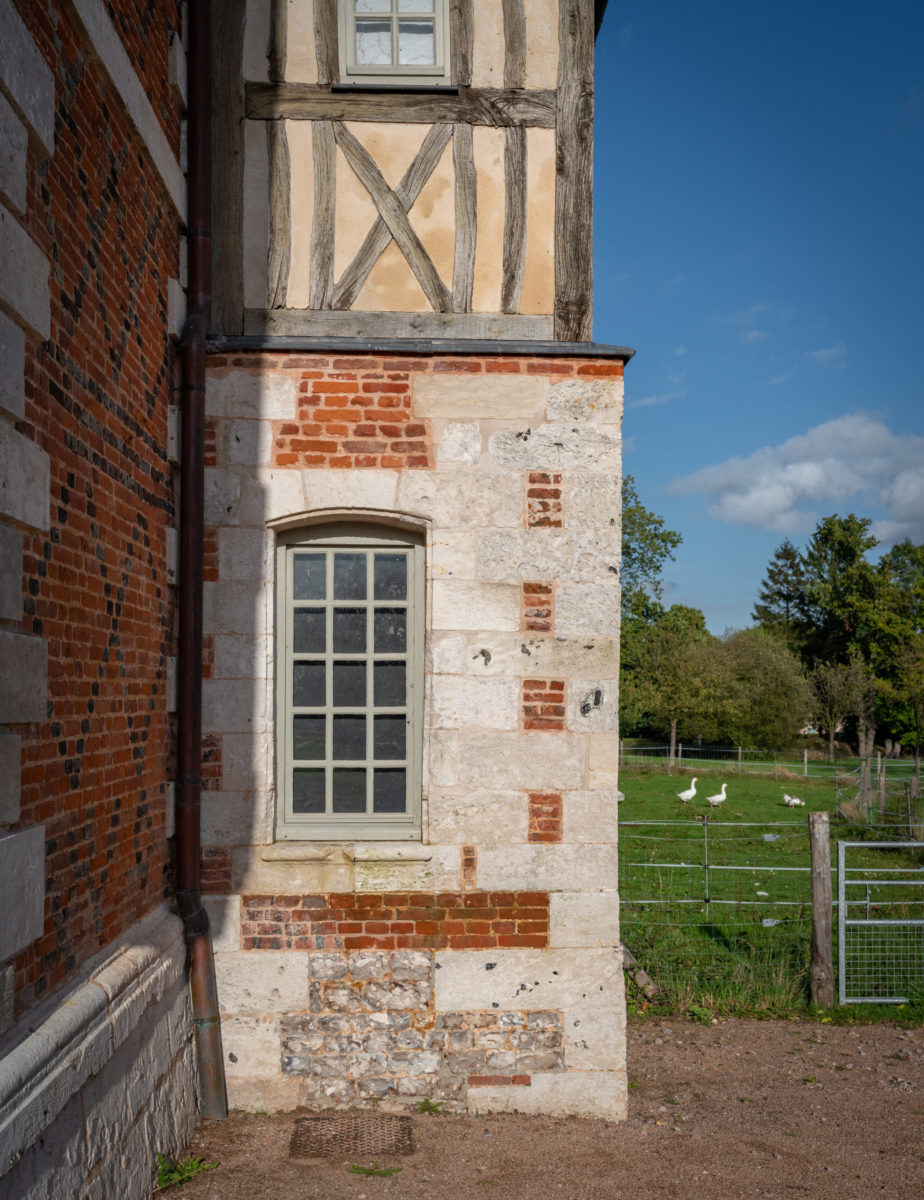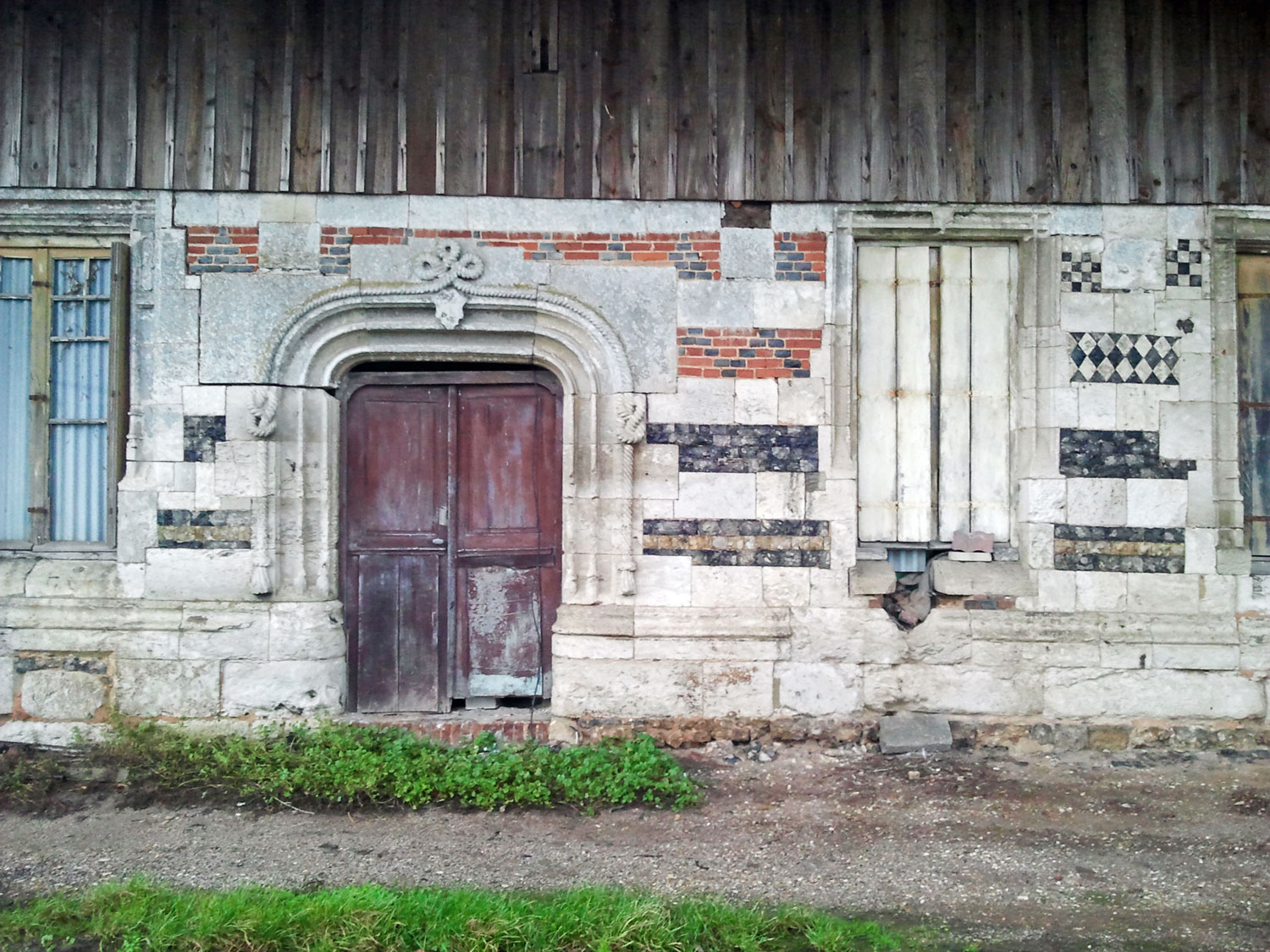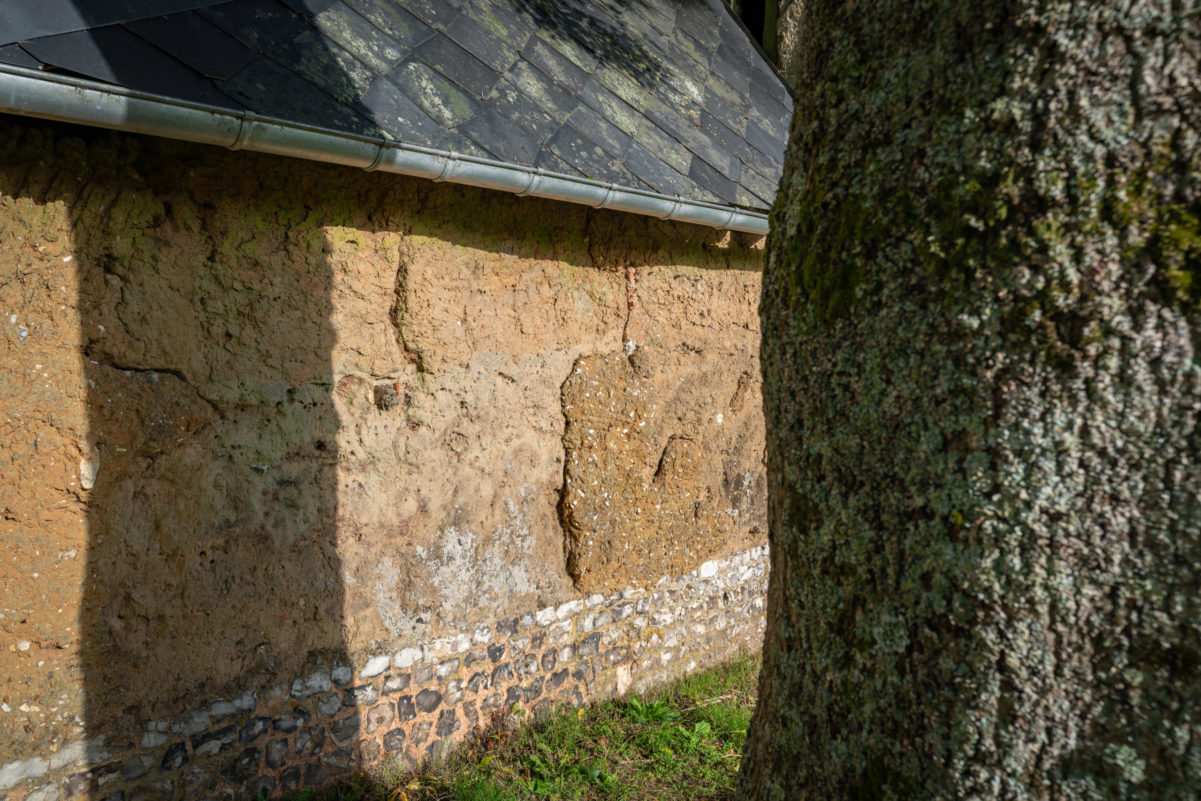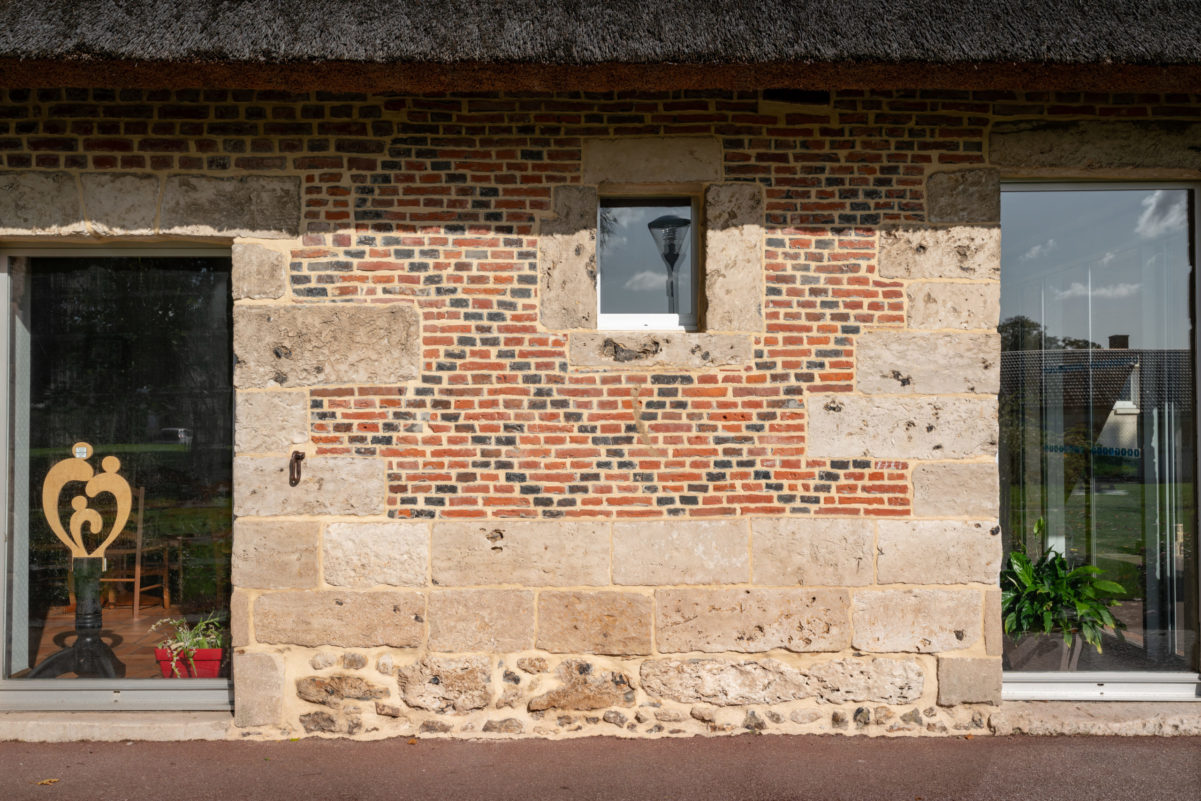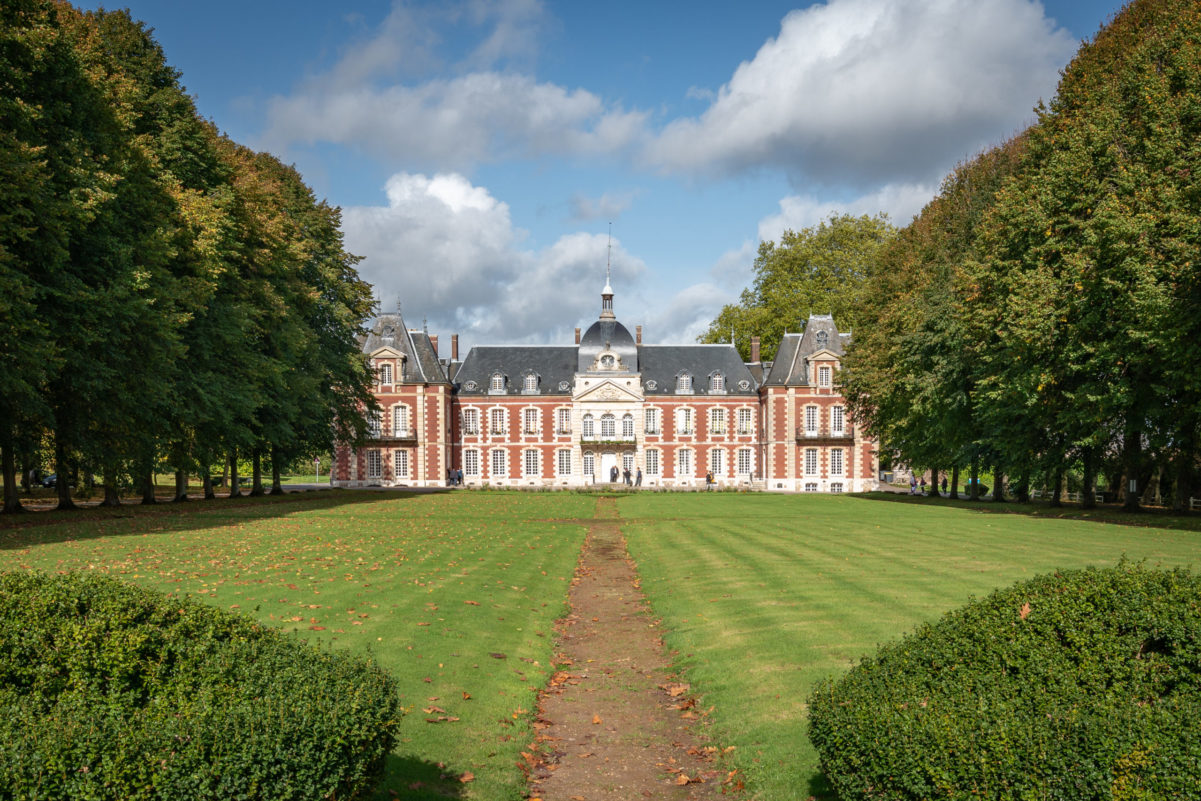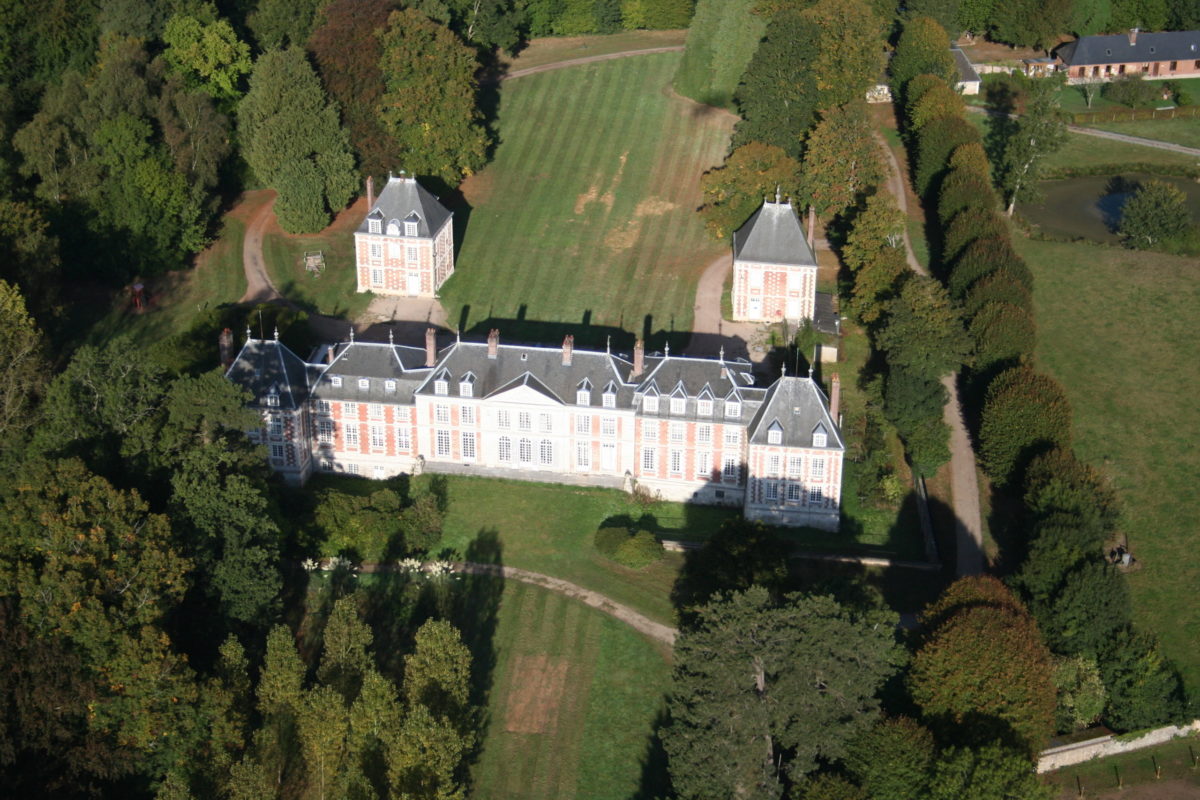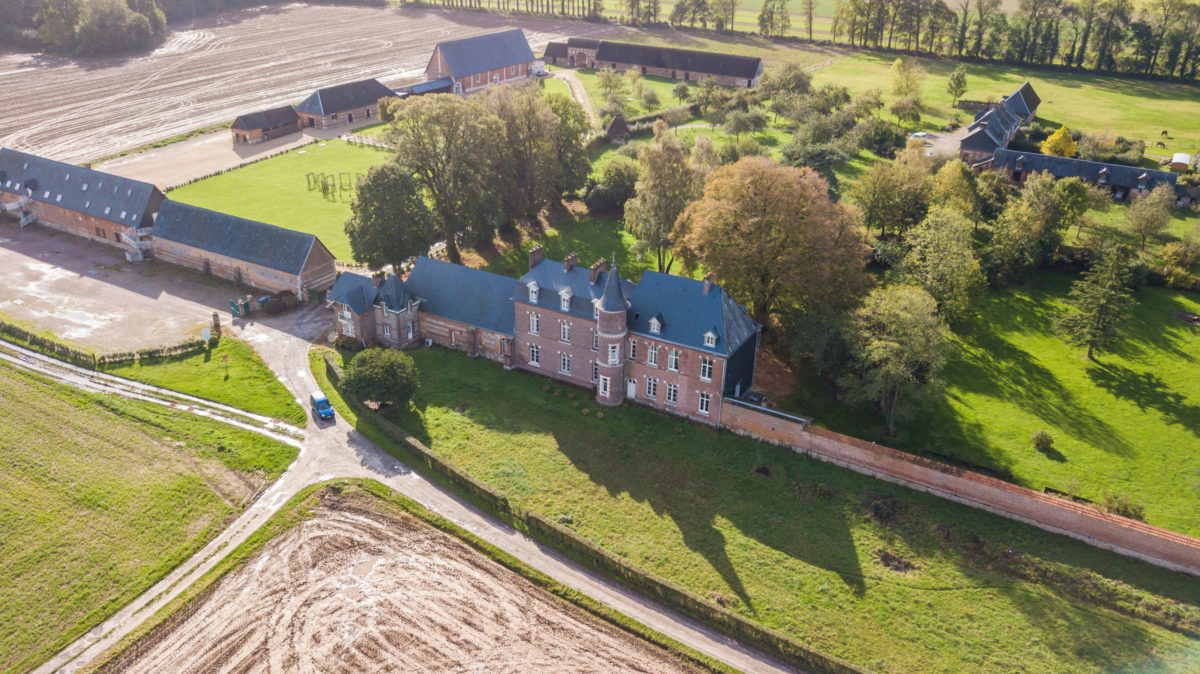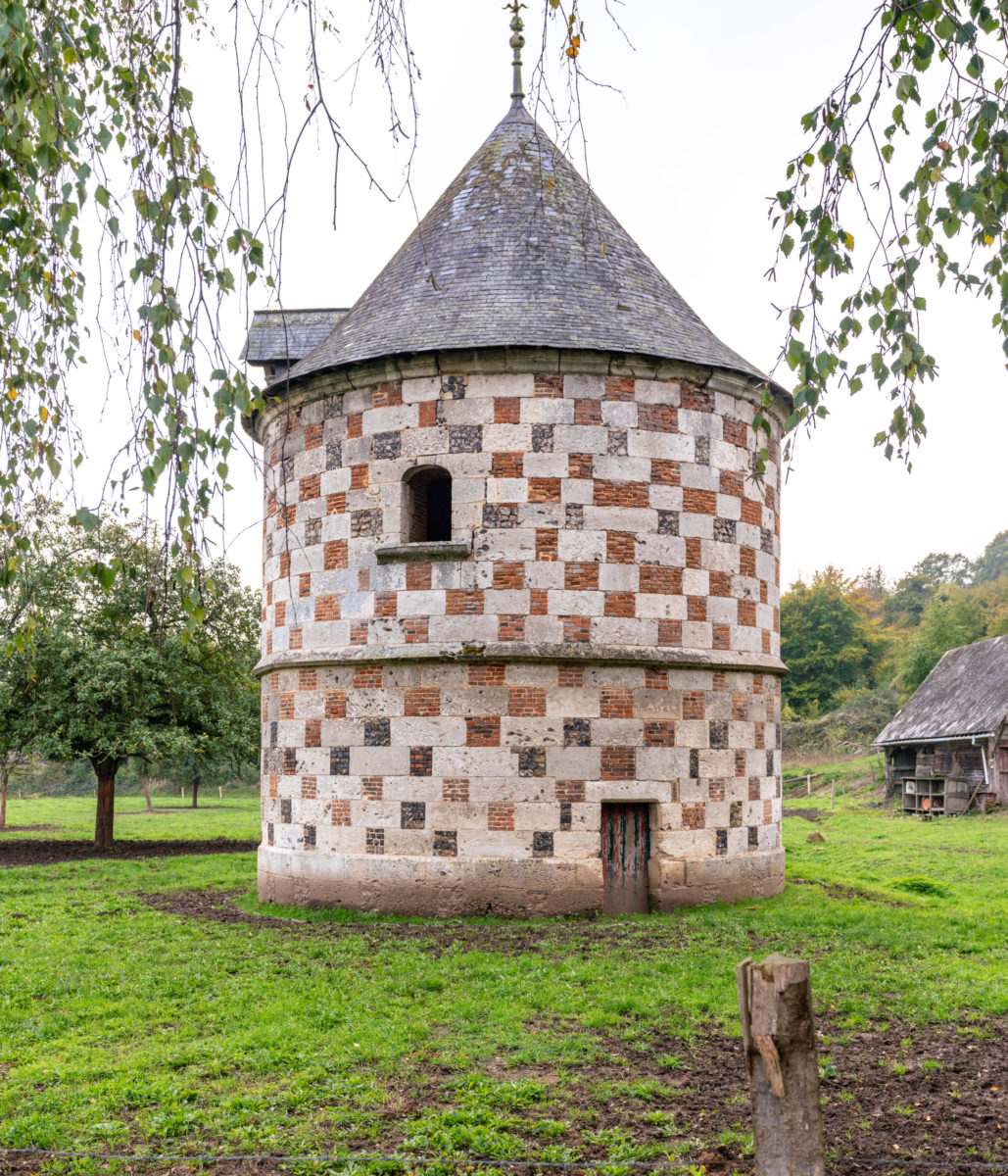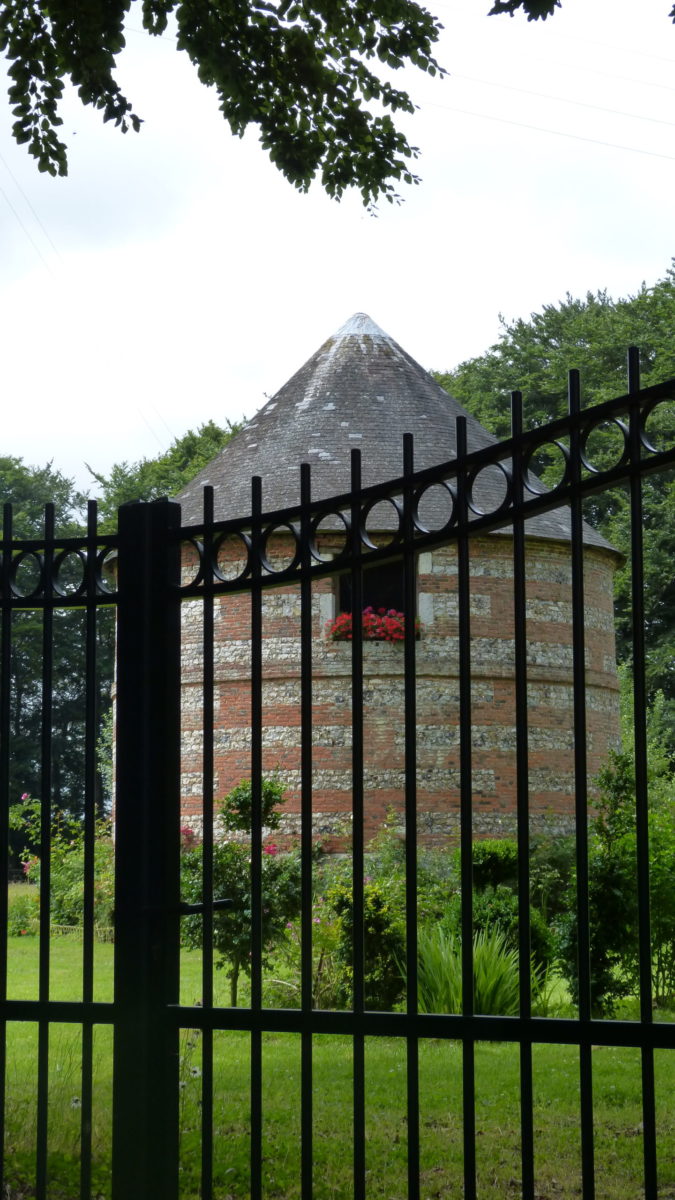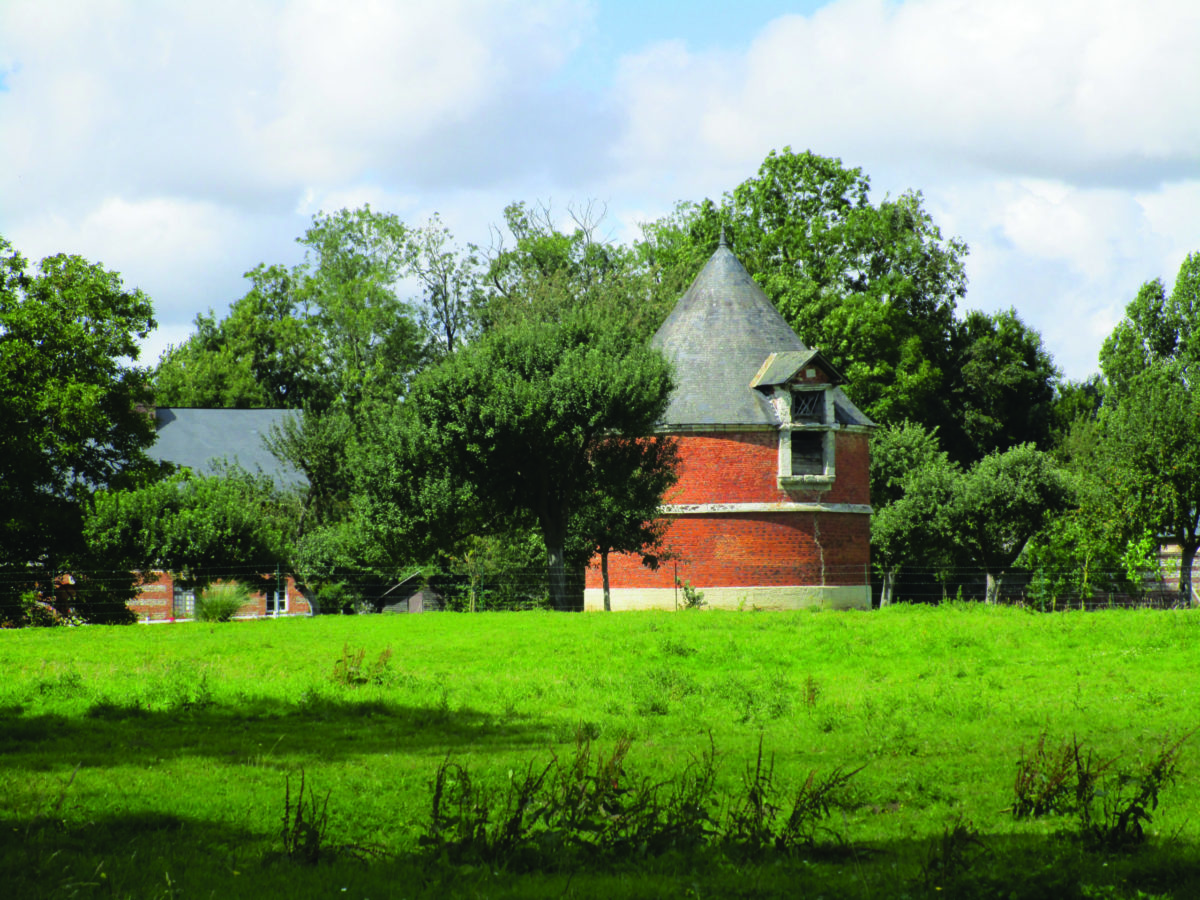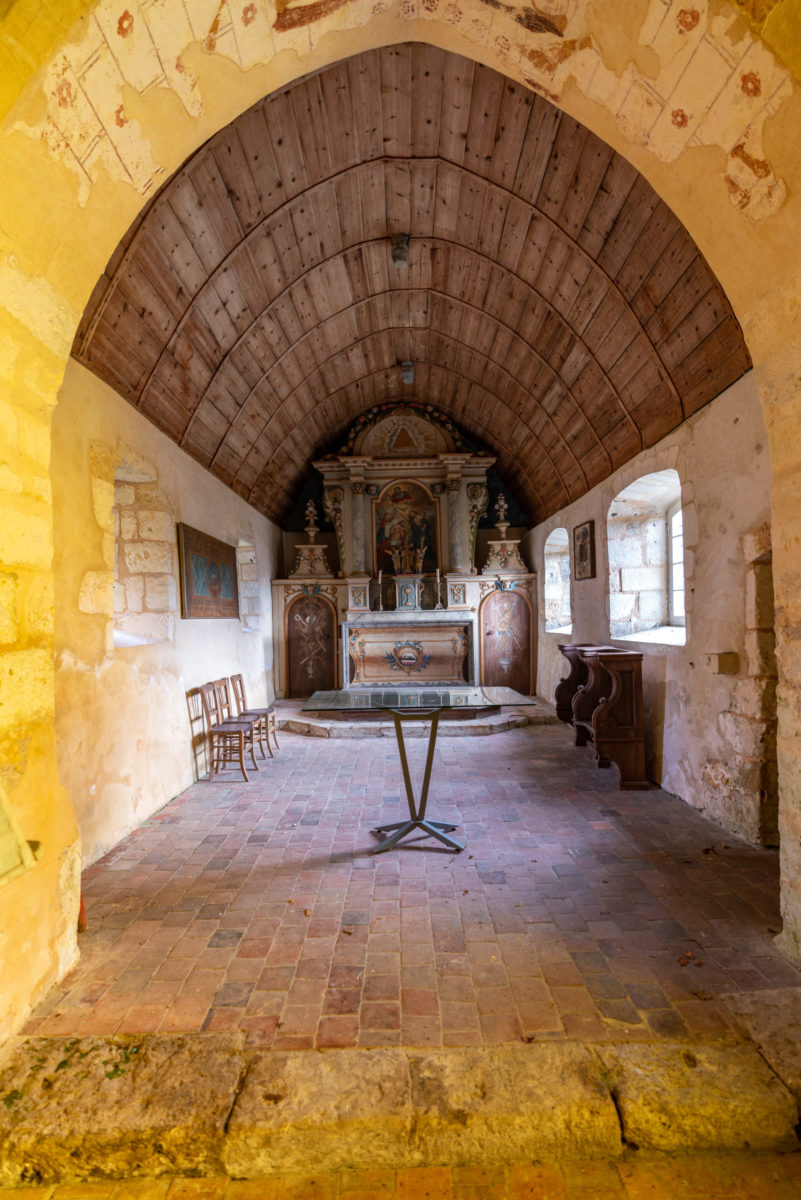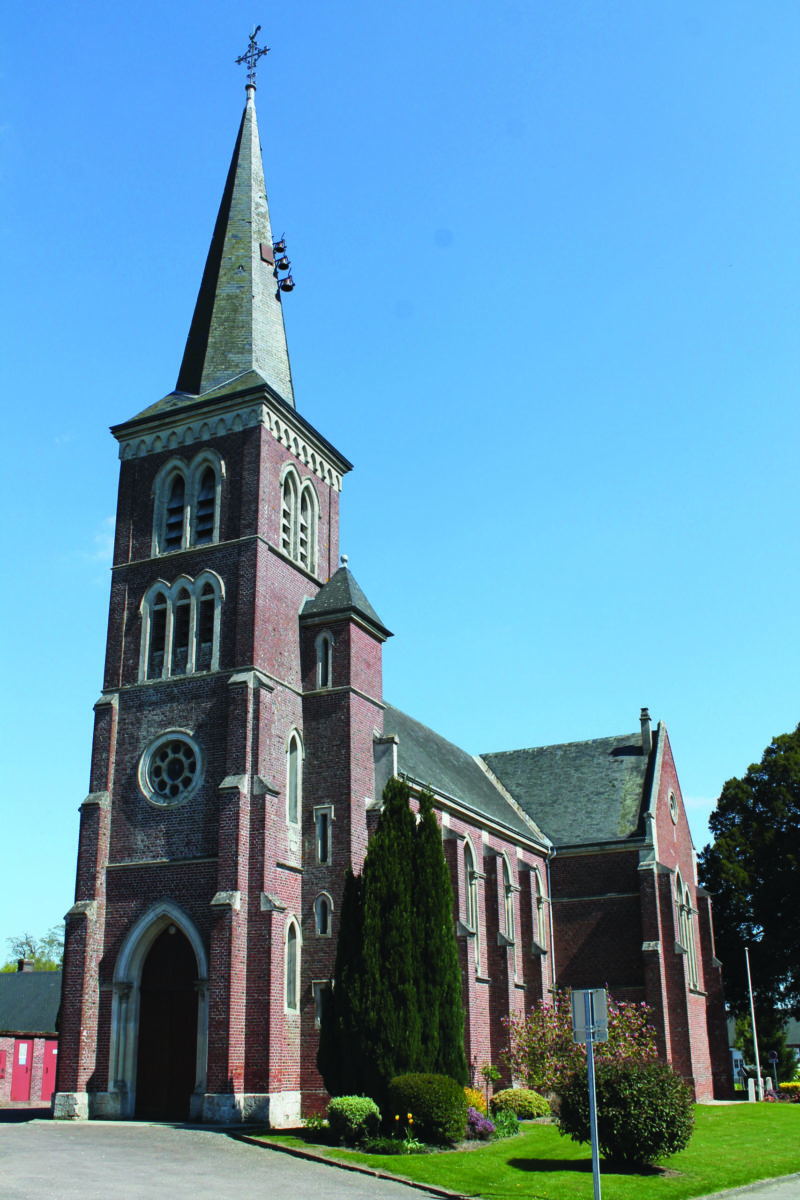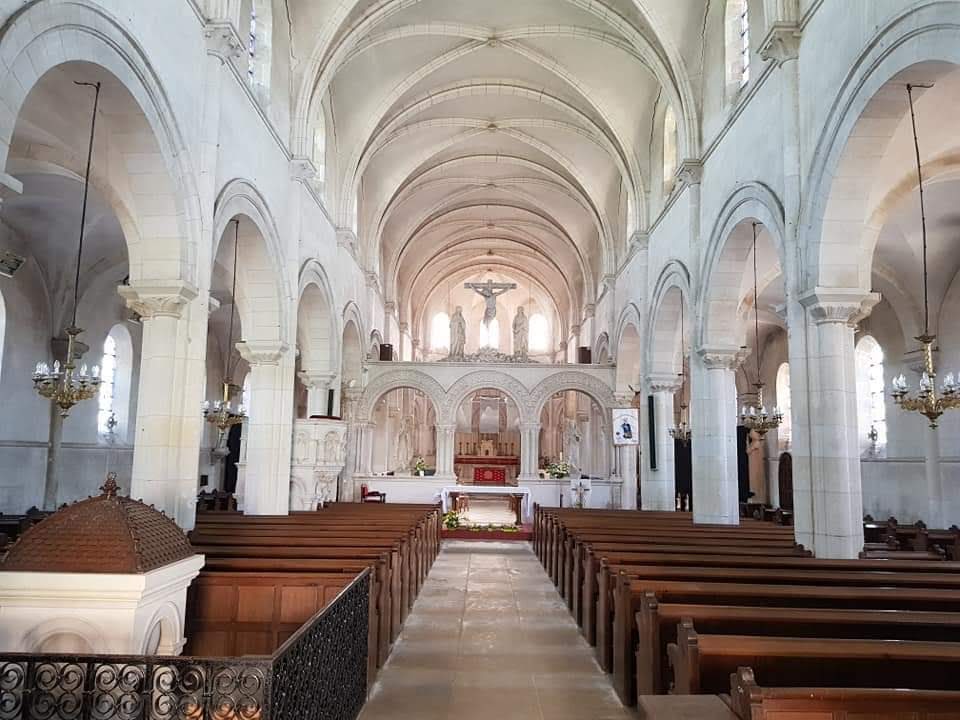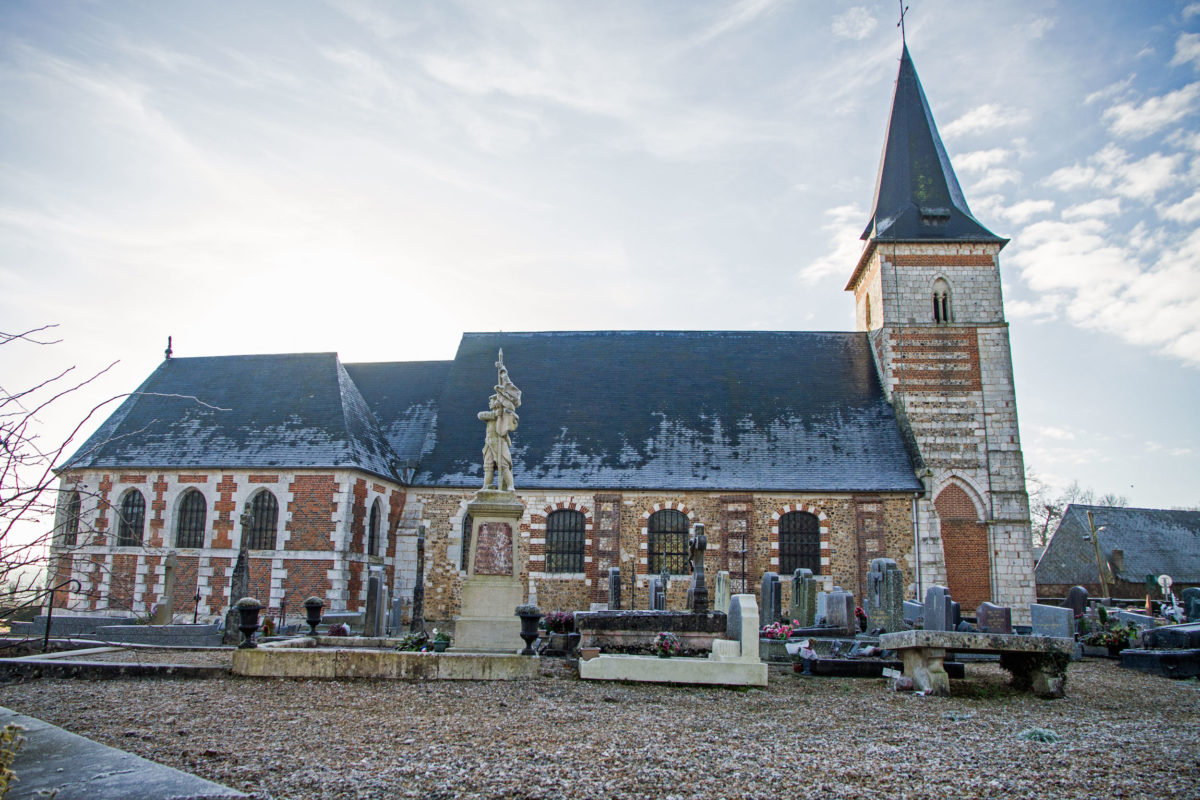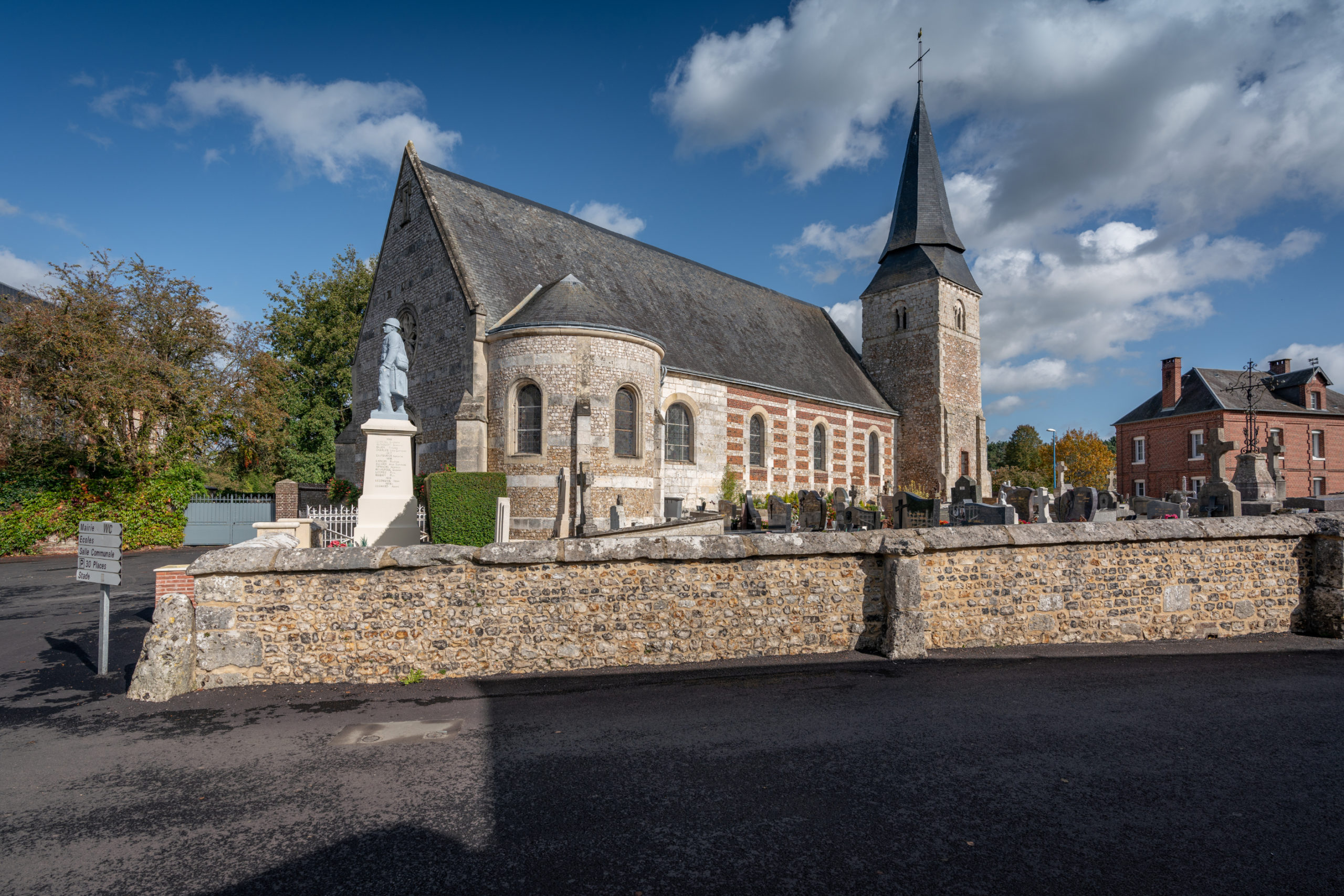Characteristic bourgs
As you wander through our villages and hamlets, you will come across a tremendous heritage which enriches our varied Cauchois landscape.
The clos-masures
A typical feature of the landscape in Pays de Caux, the rectangular clos-masure is surrounded by a bank (confusingly called a ‘ditch’) planted with two rows of trees, typically beech, ash or oak, which protect the farmhouse from the wind and from outside view. Inside, there is a dwelling, an orchard, a vegetable garden, a pond and farm buildings. Le Manoir du Catel and le Manoir du Fay are nestled amid beautiful clos-masures and are open to the public. As you explore, you’ll discover other lovely private clos-masures along our trails in Autretot ( route n°13), Betteville (route n°10), Auzebosc (route n°6) or Veauville-lès-Baons and Hautot-Saint-Sulpice (route n°14).
A variety of building materials
The diversity of building materials and a large number of beautiful houses contribute to a varied landscape. These materials combined emphasise the features of certain châteaux or decorate the facades and gables with multicoloured motifs.
In Pays de Caux, the most commonly found materials are local resources: flint carved on one side, known as ‘cat’s heads’, limestone, cob and brick. And let’s not forget thatch, which brings its rustic charm to roofs.
Stop for a moment and look around. All this architectural heritage, shaped by history and tradition, is found on every street corner, or even at the crossroads along our trekking paths…
Châteaux and fine residences
Le Manoir du Fay and le Manoir du Catel are real marvels that can be visited, although not open all year round. However, our region is rich in a large number of châteaux, castles, manor houses, charming residences and beautiful farmhouses. If these privately-owned properties are not open to the public, you can still admire them from the roads and footpaths, sometimes by peering over a hedge, sometimes by quietly looking on from entrance gate.
The 18th-century Château de Bois-Himont sits in the heart of 24 hectares of green parkland dotted with orchards, a dovecote and a pond. Today it is home to ARCAUX, a non-profit association, which assists mentally and intellectually challenged people. The association’s activities include an agricultural centre which sells its fruit and market garden produce, as well as a reception centre and hotel with reception rooms and group accommodation facilities.
Le Château de Beauvoir on the edge of the forest in Ecalles-Alix was built between 1630 and 1660 by Robert d’Esmalleville, governor of Caudebec, and can be seen from routes n°3 and n°4.
Route n°5 passes through lush, verdant countryside near Le Verbosc, in the municipality of Touffreville-la-Corbeline, where it is possible to admire the 17th-century château’s exterior.
Route n°12 takes you to the magnificent Château de Rocquefort, built in the 18th century in the charming village of the same name.
The 17th-century Château de Valliquerville is surrounded by magnificent wooded and flower-filled grounds.
Pigeon lofts and dovecotes
Pigeon lofts and dovecotes are also part of the landscape here. They were symbols of the standing of their owners in the social hierarchy. They’re often found near châteaux, manor houses and farmhouses. In Pays de Caux, Pigeon lofts were built as a separate building a little way from the main house. Up to 3,000 birds could be reared here ,not only for their flesh but also their droppings, which is an excellent fertiliser! Often round, but sometimes square or polygonal, they’re generally made of brick combined with sandstone or flint. The roof, made of thatch, tile or slate, was traditionally by an ornament depicting a pigeon. Openings allowed the pigeons to fly in and out.
You can admire the region’s dovecotes and their often singular decorations while exploring on our various marked trails: at La Folletière (route no. 8), at Betteville, in the grounds of a beautiful private property (route no. 10), on leaving the charming floral village of Autretot (route no. 13) or when passing along a country road near the village of Veauville-lès-Baons (route no. 14).
Our village churches
You’ll be surprised by the beauty and diversity of the religious legacy in our towns and villages. There’s churches, chapels, calvaries everywhere. The churches are a real treasure and windows on the past. If you visit any of them, you will discover a multitude of details which make the charm and specificity of the churches in our countryside.
In Yvetot, Saint-Pierre Church is remarkable for its round shape and pink colour. It houses a 1,046 m² stained glass window created by Max Ingrand in 1956. A true masterpiece of post-war reconstruction, the church’s doors are open every day for an unique, unmissable experience..
The Romanesque Trinity Church in Mont-de-l’If was built in the early 13th century. In 2016, the village celebrated the success of fund-raising for the church’s upkeep, resulting in the replacement of some of the stained glass windows representing the Holy Trinity, and made in the Duchemin workshops in Paris. During route n°3, you can stop to admire the interior of the church through the glass porch.
At Croix-Mare, at the start of route n°2, you can visit Saint-Aubin Church (open every day except Thursday and Sunday afternoon) with its brick and limestone walls. Dating from the late 19th century, it replaced the previous 13th-century church, which was under the auspices of Jumièges Abbey.
Notre-Dame-du-Rosaire in Hautot-le-Vatois is mentioned as early as 1024 and open on request. Its bell tower dates from the 12th century, and it was a possession of Saint-Wandrille Abbey until the Revolution. You can visit it if you take route n°12 (on request at the Town Hall). You will particularly admire the magnificent 17th-century Lord’s chapel and its monochrome stained-glass windows dating from 1635.
Also open on request or for events is Sainte-Austreberthe Church in Veauville-lès-Baons. The remarkable 16th-century square bell tower was built alongside the Romanesque church, which was itself rebuilt between 1849 and 1852.
In Touffreville-la-Corbeline, close to Saint-Martin Church, where building lasted from the 12th to the 18th century, is the cemetery where the brothers René and Henry Bossière of le Havre, explorers, pioneers of the South and former administrators of the Kerguelen Islands, are buried.
There are numerous small chapels in the area. In 1696, the parish priest installed two chapels inside the now-famous Allouville-Bellefosse Oak Tree, one dedicated to Our Lady of Peace and the other called le Chambre de l’Ermite (Hermit’s Room). A wooden staircase leads to this unmissable landmark (route n°7).
La Chapelle du Fay is surrounded by a cemetery and consists of the choir of the former church of the village of Sainte-Marie-des-Champs dates. It dates from the 13th century.



